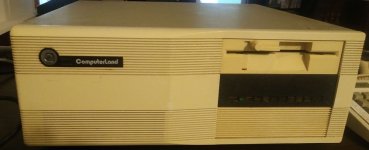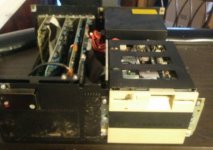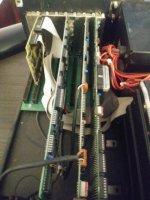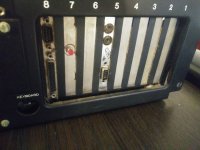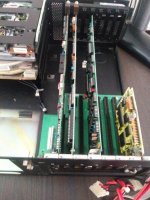JonnyGators
Experienced Member
I mentioned this find on another thread, and it was requested I post about it. So here's the official thread on my newest project computer.
I believe it's a Computerland BC-88. The BC-88 and BC-286 came in the same case, with both part numbers on the case, so I took a chance bidding on it. But from looking at it, it has a video card and a card with parallel and serial port....I believe one of the differences is that the 286 has a 3rd card in it.
Hooked it up, flipped the big red switch, and.....nothing happened. Tried again, I can see the fan rock a little each time I do it.
Ok, time to open it up. Took out the screws....case won't come of.
Oh crap.....I think it's locked.
No keys included.
I'm not sure if the lock on this model prevents it from being turned on or not. But, I'm going to need to get the lock unlocked if I'm going to get in there. Uh.....how do I go about that? I really don't want to cause any cosmetic damage to the case.
I believe it's a Computerland BC-88. The BC-88 and BC-286 came in the same case, with both part numbers on the case, so I took a chance bidding on it. But from looking at it, it has a video card and a card with parallel and serial port....I believe one of the differences is that the 286 has a 3rd card in it.
Hooked it up, flipped the big red switch, and.....nothing happened. Tried again, I can see the fan rock a little each time I do it.
Ok, time to open it up. Took out the screws....case won't come of.
Oh crap.....I think it's locked.
No keys included.
I'm not sure if the lock on this model prevents it from being turned on or not. But, I'm going to need to get the lock unlocked if I'm going to get in there. Uh.....how do I go about that? I really don't want to cause any cosmetic damage to the case.

